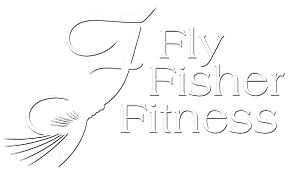Aging Lifestyle
 Aging lifestyle, what is it—and more importantly, is it necessary? Well, look around at airports, restaurants, church, the trail, the stream. What do you see?
Aging lifestyle, what is it—and more importantly, is it necessary? Well, look around at airports, restaurants, church, the trail, the stream. What do you see?
Aging Lifestyle We Need to Age Better
Are most people aging with strength, vigor, and grace, wearing their gray hair as a crown?
Could humanity be aging better?
Aging Lifestyle
An aging lifestyle is the shift in living like you did in your 20s, 30s and 40s to setting new priorities. You realize that things are changing and you begin making plans to adapt and thrive in your later decades. You become focused on longevity. Not just living longer but living with vigor. The first step is recognizing what is going on in your body. Becoming intimately aware of what aging feels like, the warning signs Nature sends you.
If I had to sum this up with one strategy for aging well, it would be this: Don’t follow the crowd.
Emerson’s lecture on Self-Reliance reminds us, “Imitation is suicide.” Don’t follow society or sages. Stand alone. Speak your latent convictions and build a cathedral of your own thoughts. “For the inmost in due time becomes the outmost.” In other words, thoughts and beliefs—the intangible—become tangible through our actions.
I Thought I had my Aging Lifestyle Under Control
Ignoring Emerson and assuming I had everything under control, there I was in my 40s with a torn hamstring, recurring sinus infections, incessant hip pain, doughy, marshmallow soft, overnourished and undermuscled.
When I met up with some friends I hadn’t seen in years, Rob (we call him Blunt) blurted, “Wow, Brian, you’ve really chunked up!”
I Did Not Have Aging Under Control
My dad died at 53 and my oldest brother at 56, but I didn’t realize I was unwittingly following the ancestral map. Then a doctor—while signing off on my approval for arduous duty with the Department of the Interior—required me to undergo a treadmill stress test because of family history and age. Apparently, after 40, problems that began years earlier at the level of cellular minutia start showing up.
Just Ask Modern Medicine
Brazen confidence turned into anxiety. My fears were deep, visceral, and charged with emotion. “Does this mean I have 10 or 15 years to live?” I asked doctors for help. What could I do to get back on track—to regain the youth I once took for granted? I begged, “Please point me toward health-building and disease-prevention strategies.”
The vague, banal, but consistent answer I received from every doctor was: “Eat your greens and move more…….”
That was a turning point. I had exercised since my twenties. I was in shape and conditioned, but aging seemed to be outpacing the calendar. I thought perhaps this was a message. Real power might be in artfully creating my own answers.
DIY
I went digging.
Studying peer-reviewed journal articles and clinical reports, I discovered that medical professionals rarely ask, What can we do to slow, reverse, or hold the line on aging—or even why we age? Their energy is focused on treating the consequences of aging, not on prevention or slowing the aging process. That is the modern medical model: diagnose and treat.
Prevention—the logical strategy I was after—is not in their lexicon. Modern medicine will extend your lifespan with treatments and pharmaceuticals. But how you age—thriving, vigorous, and strong, with quality in those extra years, what we call healthspan—is not their concern.
If you don’t understand something, just don’t talk about it.
If one slowed down, contemplated and looked deeper, one would see, doctor’s vague answers for how to build health were revealing. They cannot answer because as functional medicine physician, Mark Hyman shares, medical school doesn’t teach how to build health.
Prevention—the logical strategy I was after—is not in their lexicon. Modern medicine will extend your lifespan with treatments and pharmaceuticals. But how you age—thriving, vigorous, and strong, with quality in those extra years, what we call healthspan—is up to you
WHY? Consider The Ancients
Early medicine, however, was known to be preventive and health-building. Hippocrates (460–375 BCE), widely acclaimed as the father of medicine, was the first practitioner of the science of healthy lifestyle and disease prevention. His medical approach involved harmonizing the body and human physiology with Nature. He prescribed exercise for pain, boredom—the flatness of everyday life—and as an antidote for better health. He wrote, “If we could give every individual the right amount of nourishment and exercise, not too little and not too much, we would have found the safest way to health.”
Other health-building proponents lived around the fifth century BCE. Socrates preached the absolute necessity of exercise. Commitment to one’s own health was his mantra. “A sensible man should know what is good or bad for him better than any physician.” Siddhartha Gautama, the Buddha, linked health to personal harmony with the environment and relationships. These sages knew that the human spirit, combined with our endowed biology, could overcome, outpace, and quell the forces of aging.
They left the herd, stepped away from the status quo, and understood that the path to strength and longevity required self-reliance.
Modern Medicine and Prevention
Modern medicine’s bias toward treatment and neglect of prevention is puzzling.
Yet humans have always sought ways to improve our condition. We excel at innovating, developing new skills, and passing them on. *Curbing biological decline goes back more than two thousand years. Even before there were medical schools, people desired to maximize strength, health, and longevity. Three millennia of clinical studies confirm this fact.
So why don’t we see these safest and best ways to health in modern medicine? Somewhere along the way, prevention and health-building were lost.
It seems unnatural* that we accept limitations until you consider that our medical system is a business—a very big business. The connection to Nature has been replaced, or rather usurped, by pharmaceuticals. When you are sick, they make money. Building health may mean you rely less on their brightly lit, sanitized offices. That’s not good for business.
Our fossilized, ill-serving medical system is more like drudgery–a pitiful endurance–than healthcare. Have you waited in line at a pharmacy or LabCorp lately? The behemoth medical system might begin to crumble if this bedlam ceased or even slowed.
In fact, calling our system “health care” is a misnomer. What we have is more like illness care.
Aging Lifestyle Our Hands Are Not Tied
I am not saying ignore medical care. I am saying: recognize its limitations. Doctors are not your personal trainer or nutritionist. They simply cannot do those jobs. Understand the need for your increased knowledge and involvement. Become your own aging advocate.
Quality of life, health-building, strength, and vigor cannot be found in a medical office. Creating healthspan—a supreme quality of life—is our responsibility. No doctor can give your aging body the kind of meticulous attention and care it needs and deserves.
You give yourself this attention and care through the Aging Lifestyle you create.
UPDATE: My early aging was not harmless or benign. In fact, the hamstring that took forever to heal, recurring sinus infections, incessant hip pain and my overweight, doughy, marshmallow soft physique turned out to be symptoms. Some of which went away by adopting an aging lifestyle. But the bad guys moved in. As I waited and watched, serious disease had developed under the wrinkles. The emperor of all maladies showed up in force. I share the details in a more intimate setting on Substack.
Are you interested in joining a community of like-minded fly fishers and outdoor types who want to engage and discuss The Art of Aging?
Learn more…..Join us on Substack!
Categorized in: General Knowledge
